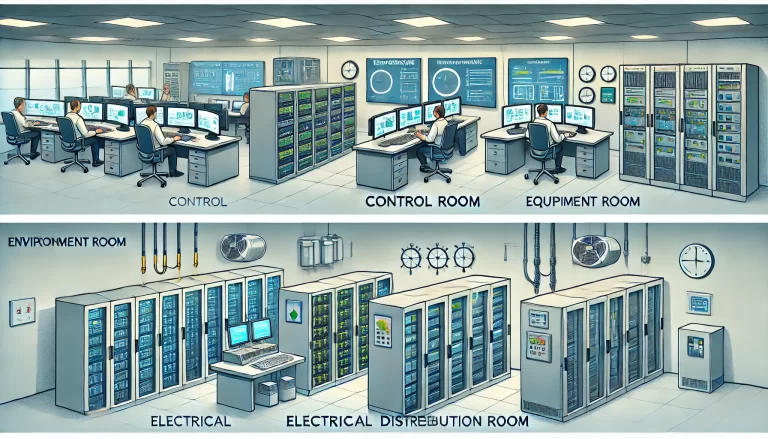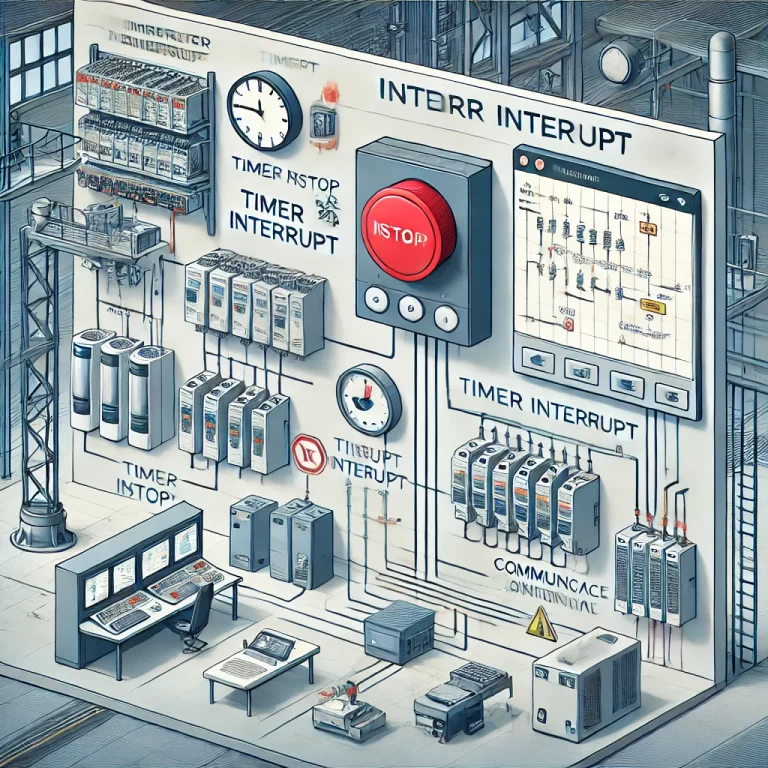Introduction
An Emergency Stop (E-Stop) is a critical safety mechanism in programmable logic controller (PLC) systems. It halts ongoing actions by disconnecting the control circuit via relays or contactors. E-Stops are indispensable in industrial automation, ensuring equipment and personnel safety during emergencies. This article explores the concept, application, and best practices of using E-Stops in PLC systems.
1. What is an Emergency Stop?
An E-Stop is a safety mechanism designed to immediately stop a device’s operation when a fault or hazardous condition occurs. Its purpose is to prevent accidents, protect equipment, and ensure the safety of operators.
Key Types of E-Stops:
- Normally Open (NO): The contacts are disconnected in their default state.
- Normally Closed (NC): The contacts are connected in their default state.
- Momentary (Instantaneous): Activates the stop function immediately.
- Timed Delay: Introduces a delay before halting the operation.

2. How Does an E-Stop Work in a PLC Program?
In a PLC system, the E-Stop button interrupts the control circuit when pressed. The two primary configurations are:
Normally Closed Configuration:
- When the button is pressed, the NC contact opens, breaking the circuit and halting operations.
- This ensures that equipment is stopped even if the control system fails.
Normally Open Configuration:
- When the button is pressed, the NO contact closes, triggering a stop signal in the PLC program.
Example Use Cases:
- Safety in Operation: When new equipment is introduced or existing equipment reaches maximum load, an E-Stop ensures safety.
- Emergency Halts: Stopping cranes, oil presses, or motors during emergencies.
- Logic Adjustments: Temporarily halting operations to change program parameters or add relays.
3. Why Prefer Normally Closed Over Normally Open?
In industrial automation, the NC configuration is often preferred for safety reasons. If a wire is damaged or the E-Stop circuit fails, the equipment will automatically stop. On the other hand, with NO configuration, the equipment might continue running if the circuit is compromised, leading to potential hazards.

4. Instantaneous vs. Timed E-Stops
Instantaneous E-Stop:
- Disconnects power immediately upon activation.
- Example: In a production line, halting a running machine prevents a cascading shutdown of other equipment.
Timed E-Stop:
- Introduces a delay before halting operations.
- Useful when controlled shutdown is necessary to prevent damage to the system.
5. The Role of Relays in E-Stops
Relays are commonly used to implement E-Stop circuits in PLC systems. They act as intermediaries, ensuring safety by isolating the control circuit from the equipment being controlled. The advantages of using relays include:
- Large control capacity.
- Flexibility in circuit design.
- Reliability in handling safety-critical functions.
Why Not Use Contactors?
Contactors, while useful, often have limited control capacity and are not as suitable for high-load safety applications as relays. PLC systems leverage relays for robust, safe E-Stop designs.

6. Practical Tips for Implementing E-Stops in PLC Programming
Start Small:
- Beginners should practice basic E-Stop configurations in simple projects before tackling complex systems.
Experiment:
- Test various scenarios, such as momentary stops and timed delays, to understand their impact on system performance.
Use Diagrams:
- Design circuit diagrams to visualize the E-Stop implementation clearly.
Prioritize Safety:
- Incorporate redundancy and fail-safe mechanisms to ensure reliability.

7. Conclusion
E-Stops are integral to modern industrial automation, safeguarding both personnel and equipment. To master PLC programming and system safety, one must understand the nuances of E-Stop design and application. Whether you’re a beginner or an advanced practitioner, experimenting with various configurations and gaining hands-on experience will enhance your expertise.
In a world increasingly reliant on automation, knowledge of safety systems like E-Stops is not just technical expertise but a lifesaving skill.
